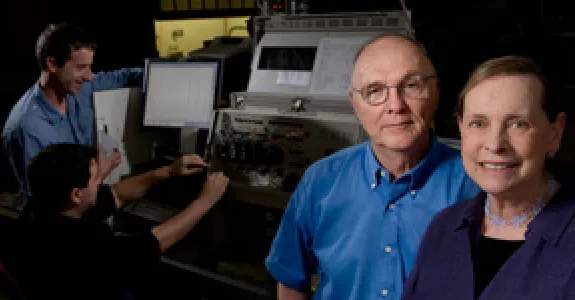
Dr. Shapiro's laboratory question in developmental biology involves the mechanisms used to generate the three-dimensional organization of a cell from a one-dimensional genetic code. Their goal is to define these mechanisms using both molecular genetics and biochemistry. The developmental program by which a single cell proceeds to a fully-developed organism involves cell divisions that yield dissimilar daughter cells. The characteristics that differentiate one daughter cell from the other result from differential transcription and subcellular positioning of regulatory and structural proteins. How this is brought about remains one of the most fundamental questions of developmental biology. To approach this question, they are studying a bacterial cell, whose simple life cycle is focused on the generation of asymmetry in the predivisional cell.
They are using full genome sequence and microarray technology to identify the genetic circuitry that controls the cell cycle in a bacterial cell with 3767 genes. Dynamic protein localization, phosphorelay signaling cascades, and spatially and temporally controlled proteolysis are overlayed on the transcription network that controls cell cycle progression and cell differentiation.






